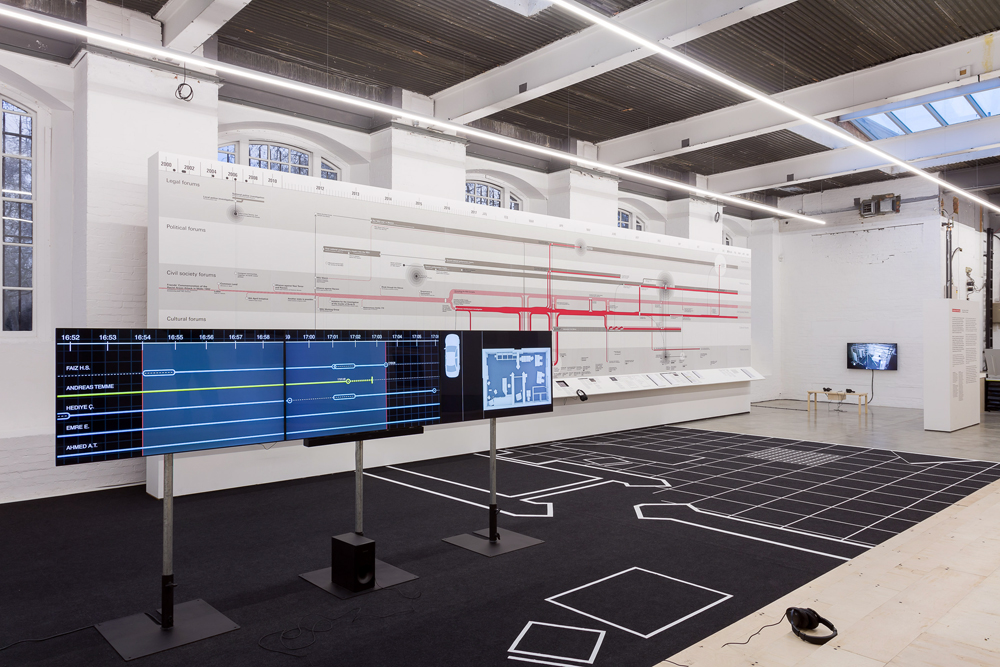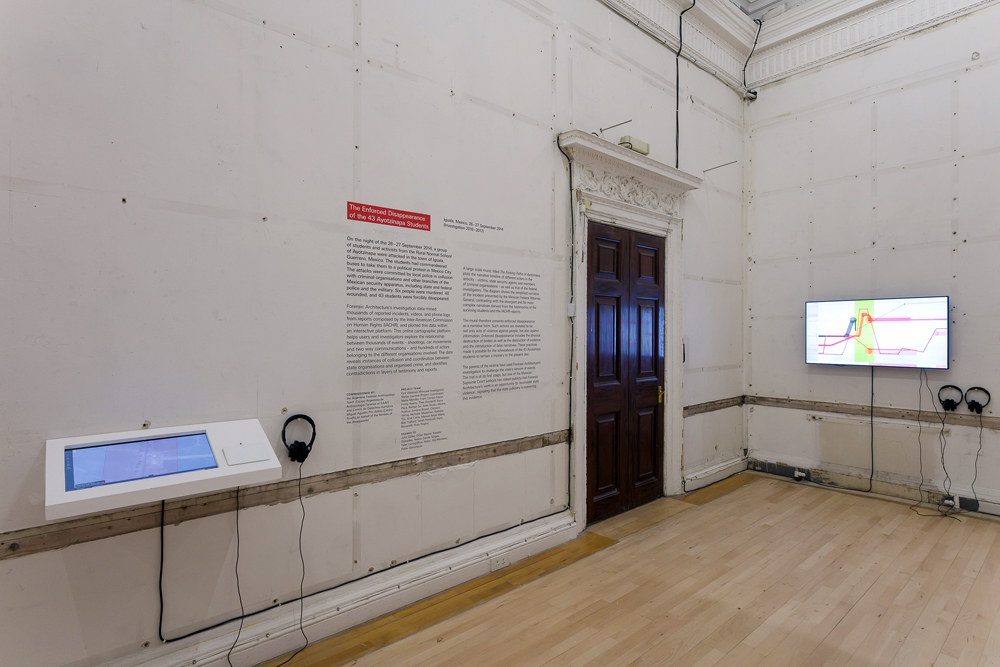Forensic Architecture is both the name of the agency established in 2010, and a form of investigative practice into state violence and human rights violations that traverses architectural, journalistic and legal fields, and shifts between critical reflections and tactical interventions.
Counter Investigations presents a selection of recent investigations undertaken by the agency into incidents occurring in different contexts worldwide. In parallel, the exhibition outlines five key concepts that raise related historical, theoretical and technological questions. Continuing to be explored in an accompanying series of public seminars, these investigations and propositions add up to a Short Course in Forensic Architecture.
Grounded in the use of architecture as an analytic device, Forensic Architecture has in recent years developed a host of new evidentiary methods that respond to our changing media landscape – exemplified in the widespread availability of digital recording equipment, satellite imaging and platforms for data sharing – and propose new modes of open-source, citizen-led evidence gathering and activism.
Forensic Architecture has worked closely with communities affected by acts of social and political violence, alongside NGOs, human rights groups, activists, and media organisations. Their investigations have provided decisive evidence in a number of legal cases, and contested accounts given by state authorities, leading to military, parliamentary and UN inquiries.
Counter Investigations marks the beginning of a long term collaboration between the Institute of Contemporary Arts and Forensic Architecture. The exhibition and this ongoing partnership exemplifies the Institute of Contemporary Arts’ intent to foster and explore new modes of civil practice operating across the fields of art, architecture and activism.
Image: Forensic Architecture, ‘77sqm_926min’, 2017. Simulation of the fluid dynamics of smell particles (ammonia) within the front room of the internet cafe where Halit Yozgat was murdered on the 6th April 2006 by a member of the neo-Nazi group known as the National Socialist Underground (NSU). Image courtesy of Dr. Salvador Navarro-Martinez and Forensic Architecture, 2017.
Forensic Architecture exhibition team: Eyal Weizman (Director), Christina Varvia (Researcher in Charge), Ariel Caine, Franc Camps Ferber, Stefan Laxness, Stefanos Levidis, Nicholas Masterton, Samaneh Moafi, Sarah Nankivell, Elena Paca, Robert Preuss, Grace Quah, Theo Resnikoff, Simone Rowat, Nathan Su, Bob Trafford, William Winfield, Charles Heller and Lorenzo Pezzani (Forensic Oceanography)
Graphics: Wayne Daly & Claire Lyon, Matthew Chrislip
Short Course in Forensic Architecture is organized in partnership with MA in Forensic Architecture, Centre for Research Architecture, Goldsmiths, University of London led by Susan Schuppli and Lorenzo Pezzani
Exhibition Supporters: The Graham Foundation for Advanced Studies in the Fine Arts and The Forensic Architecture Exhibition Supporters Circle: Shane Akeroyd, Charles Asprey, Sir Richard Rogers
Forensic Architecture Supporters: European Research Council (ERC); Sigrid Rausing Trust; Potter Foundation; OAK foundation; Goldsmiths, University of London
Installation shots:

All photographs © Mark Blower






